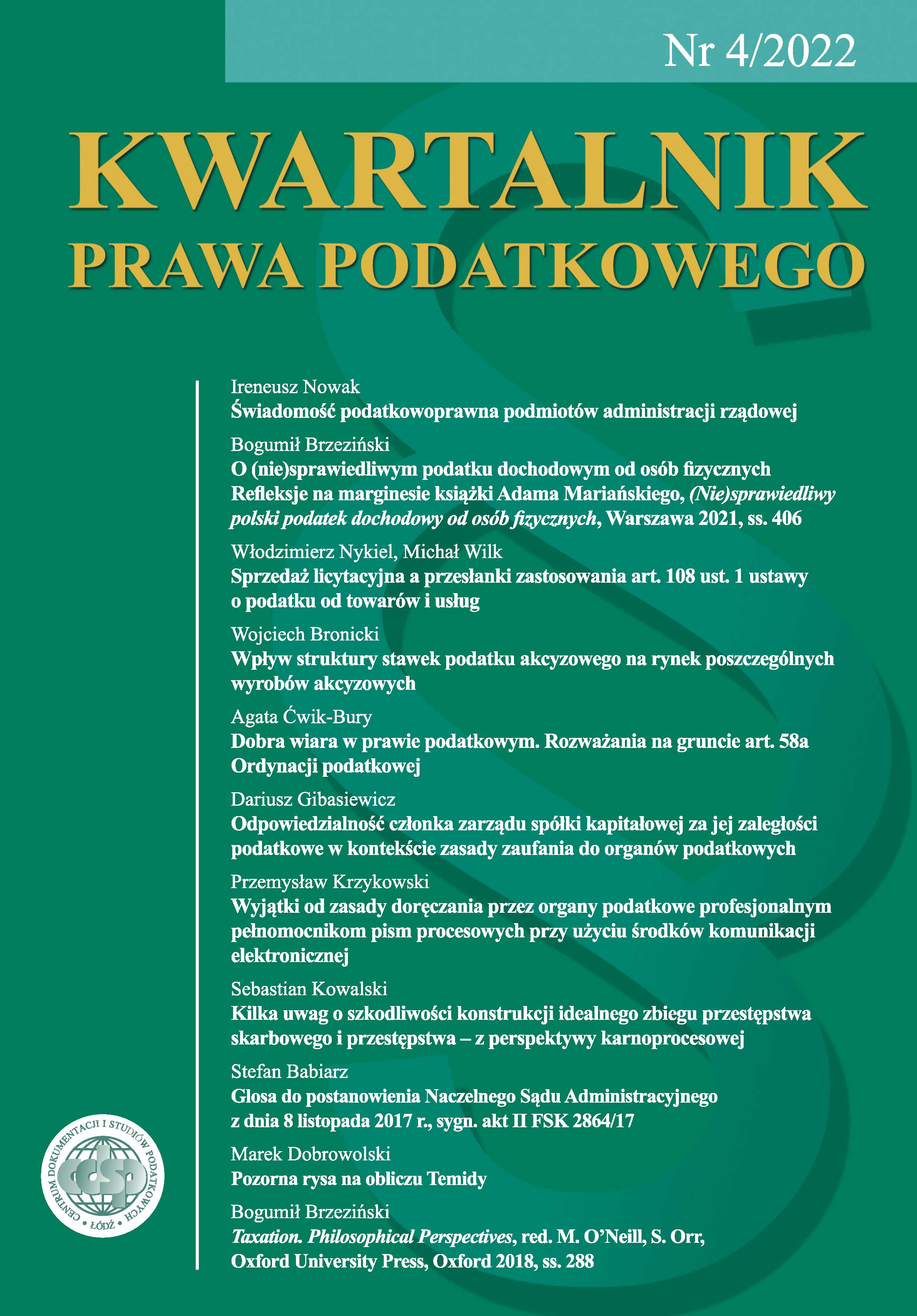Wpływ struktury stawek podatku akcyzowego na rynek poszczególnych wyrobów akcyzowych
Impact of the structure of the excise duty rate on the market of individual excise goods
Author(s): Wojciech BronickiSubject(s): Law, Constitution, Jurisprudence
Published by: Wydawnictwo Uniwersytetu Łódzkiego
Keywords: excise duty; tax; rates; excise goods; alcohol; cigarettes; beer; win
Summary/Abstract: The excise duty collection system in the European Union as well as in Poland based mainly on the procedure of suspended excise duty collection here is the tightest tax collection system. Setting excise duty rates for ethyl alcohol, beer, wine and fermented beverages as well as cigarettes, smoking tobacco or innovative products until 2027 (for a five-year period), has a very large impact on the market of these products. In the case of alcoholic beverages, the established excise duty rates maintain the tax rate relationship between high-percentage beverages such as vodka and low-percentage beverages such as beer and wine. However, due to the high sensitivity of price changes in the case of relatively cheap individual low-alcohol beverages such as beer, their consumption may be limited at the expense of high-alcohol beverages. In the case of tobacco products, and especially cigarettes, the relationship of the excise tax burden on cheap cigarettes to expensive cigarettes will be maintained in the long term, because beyond the first year of application of the new rates, an equal increase in the charge due to the quota rate was applied. However, with regard to alternative products to cigarettes, such as e-cigarettes and novel products, such a balance was not maintained, as the rates for novel products significantly increased while the rates for e-cigarettes were left unchanged. The rates on traditional cigarettes were also left unchanged in the first year, increasing only the minimum rate, but to a lesser extent than inflation. As a result, even cigarettes covered by this minimum rate are realistically not less economically available. In addition, the market continues to offer cigarettes at prices well below the weighted average value of cigarettes in the previous year. The structure of the market should not, however, be affected by the planned increases in excise tax rates on smoking tobacco, innovative products and cigarettes, starting from 2023, because they increase equally (except for e-cigarettes) by 10% on all products, and are implemented by increasing the amount rate.
Journal: Kwartalnik Prawa Podatkowego
- Issue Year: 2022
- Issue No: 4
- Page Range: 95-126
- Page Count: 32
- Language: Polish

